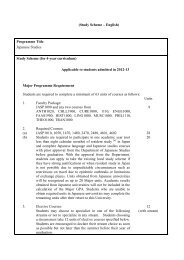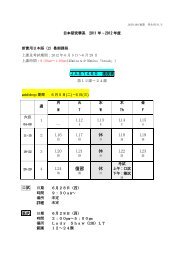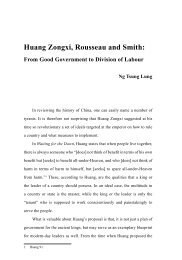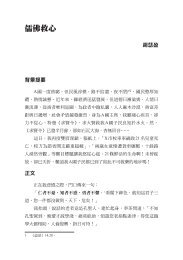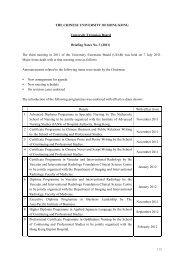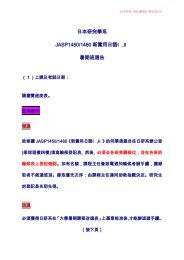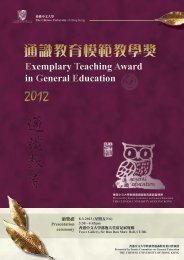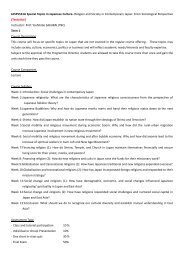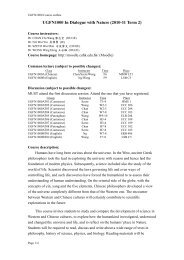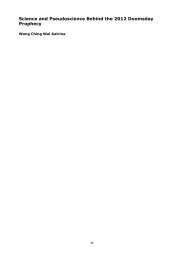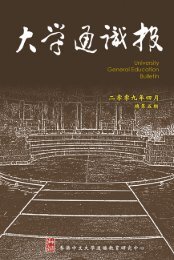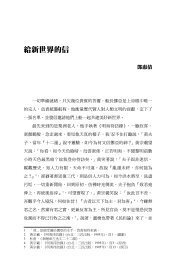ä¸è¼å ¨æ¸ - The Chinese University of Hong Kong
ä¸è¼å ¨æ¸ - The Chinese University of Hong Kong
ä¸è¼å ¨æ¸ - The Chinese University of Hong Kong
Create successful ePaper yourself
Turn your PDF publications into a flip-book with our unique Google optimized e-Paper software.
216 Teaching and Learning in General Education<br />
mine) and that “[t]hinking critically in a field is getting hold <strong>of</strong> the logic <strong>of</strong><br />
that field” (p. 96). Elements <strong>of</strong> reasoning include, for instance, identifying<br />
assumptions, the question at issue, the implications and consequences, the<br />
point <strong>of</strong> view, and the purpose. When examining a theory in a discipline,<br />
one may ask, critically, “What assumptions is this theory making” On the<br />
other hand, “standards” means some commonly recognized standards <strong>of</strong> CT,<br />
like those expressed by these adjectives: clear, accurate, important, relevant,<br />
sufficient, deep, broad, and precise. With these standards in mind, a followup<br />
CT question can be “Are the assumptions that have been made accurate”<br />
Lastly, “in terms <strong>of</strong> the discipline” means, <strong>of</strong> course, that one is engaged in<br />
CT within that discipline — the discipline is a lens through which one looks<br />
at (reasons about) the world. Nosich has raised three common related ways<br />
through which a discipline can take effect: by asking central questions <strong>of</strong> the<br />
discipline, by doing an analysis through its points <strong>of</strong> view, and by applying<br />
its fundamental and powerful concepts for analysis. If the discipline is, say,<br />
sociology, the foregoing question may be modified as, “Has the theory made<br />
accurate assumptions, in terms <strong>of</strong> what we know about social patterns” 12<br />
Effective testing or measuring <strong>of</strong> the results <strong>of</strong> learning is an essential<br />
component <strong>of</strong> curriculum design. How should CT learning results be tested<br />
or measured, whether in general or within a discipline Among the available<br />
specially designed tests or measures for CT, some have been designed with<br />
close reference to the APA Delphi Report and can be accessed through the<br />
Internet. 13 Some exemplary titles are: “<strong>The</strong> California Critical Thinking<br />
12 In addition to the core process <strong>of</strong> CT in a discipline, Nosich has also discussed additional CT<br />
processes that make use <strong>of</strong> the results <strong>of</strong> the core process, including evaluation, application,<br />
action, comparison and contrast, decision making, living mindfully, and others.<br />
13 http://www.insightassessment.com/home.html.



